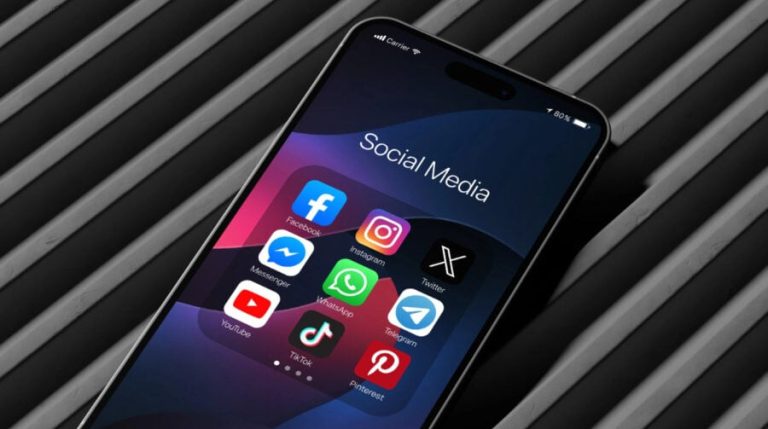Social Media: A Double-Edged Sword for Teenagers’ Well-being
Social media platforms like Facebook, Instagram, YouTube, X (formerly Twitter), and TikTok have become integral parts of modern life, particularly for teenagers. While concerns about their potential harms are frequently voiced, a recent Pew Research Center report sheds light on the multifaceted nature of social media’s impact, highlighting both its benefits and drawbacks for adolescent users. The report reveals a complex interplay of connection, creativity, mental health support, and potential negative consequences, painting a picture of a digital landscape that simultaneously empowers and challenges young people.
One of the key findings of the Pew Research Center survey is the significant role social media plays in fostering connections between teenagers and their loved ones. A substantial 74% of American teens reported feeling more connected to family and friends through online platforms. This finding underscores the power of social media in bridging geographical distances and facilitating communication, allowing teens to maintain relationships and build new ones in the digital realm. Furthermore, the ability of these platforms to act as a creative outlet is also highlighted, with 63% of surveyed teens stating that social media allows them to express their creativity more effectively. This suggests that these platforms offer unique avenues for self-expression, allowing teens to share their talents, perspectives, and ideas with a wider audience. This positive impact extends beyond personal connections and creativity, particularly for marginalized groups like LGBTQ+ youth of color. A separate survey by The Trevor Project found that platforms like TikTok, Discord, and Instagram provide safe spaces for these young people to feel heard and understood, contributing significantly to their mental well-being.
The positive influence of social media extends to mental health support, often viewed as a domain where these platforms are considered detrimental. The Pew Research Center survey revealed that a significant portion of teens, 34%, utilize social media to gather information about mental health, while a considerable 63% consider it an important source for such information. This highlights the potential of social media to destigmatize mental health issues and provide accessible resources and support networks for young people seeking help. The Trevor Project’s survey further reinforces this positive impact, showing a correlation between feeling safe on social media and a decreased likelihood of suicide attempts among LGBTQ+ youth of color. These findings challenge the prevailing narrative that social media solely contributes to mental health problems, demonstrating its potential to offer valuable support and resources to vulnerable populations.
However, the Pew Research Center report also acknowledges the negative aspects of social media usage among teenagers. A striking disparity emerges between teens’ perception of social media’s impact on themselves versus their peers. While only 14% believe social media negatively affects them personally, almost half (48%) believe it has a negative impact on their peers. This disconnect suggests a potential lack of awareness or a tendency to downplay the potential harms of excessive social media use. This discrepancy further underscores the need for open conversations about responsible online behavior and the importance of critically evaluating the information consumed on these platforms.
The negative impact of social media also manifests in other areas of teens’ lives. A significant number of respondents (45%) reported experiencing sleep disturbances due to social media use, while 40% acknowledged a negative impact on their productivity. These findings highlight the potential for excessive screen time and engagement with social media to disrupt healthy sleep patterns and interfere with academic or personal responsibilities. The constant stream of notifications, the pressure to stay connected, and the fear of missing out (FOMO) can contribute to sleep deprivation and a decrease in focus, potentially affecting academic performance and overall well-being.
In conclusion, the Pew Research Center report and The Trevor Project’s findings present a nuanced perspective on the impact of social media on teenagers. While these platforms can foster connections, provide avenues for creative expression, and offer valuable mental health support, they also pose potential risks to sleep, productivity, and mental well-being. This duality underscores the importance of responsible social media use, media literacy, and open communication between parents, educators, and teenagers about navigating the complex digital landscape. A balanced approach, recognizing both the benefits and drawbacks of social media, is crucial to harnessing its positive potential while mitigating its negative consequences for young people. This requires a collective effort to promote digital well-being and equip teenagers with the tools and knowledge to navigate the complexities of online interactions and information consumption. The future of healthy social media usage relies on fostering critical thinking, encouraging mindful engagement, and prioritizing real-world connections alongside the digital ones.


